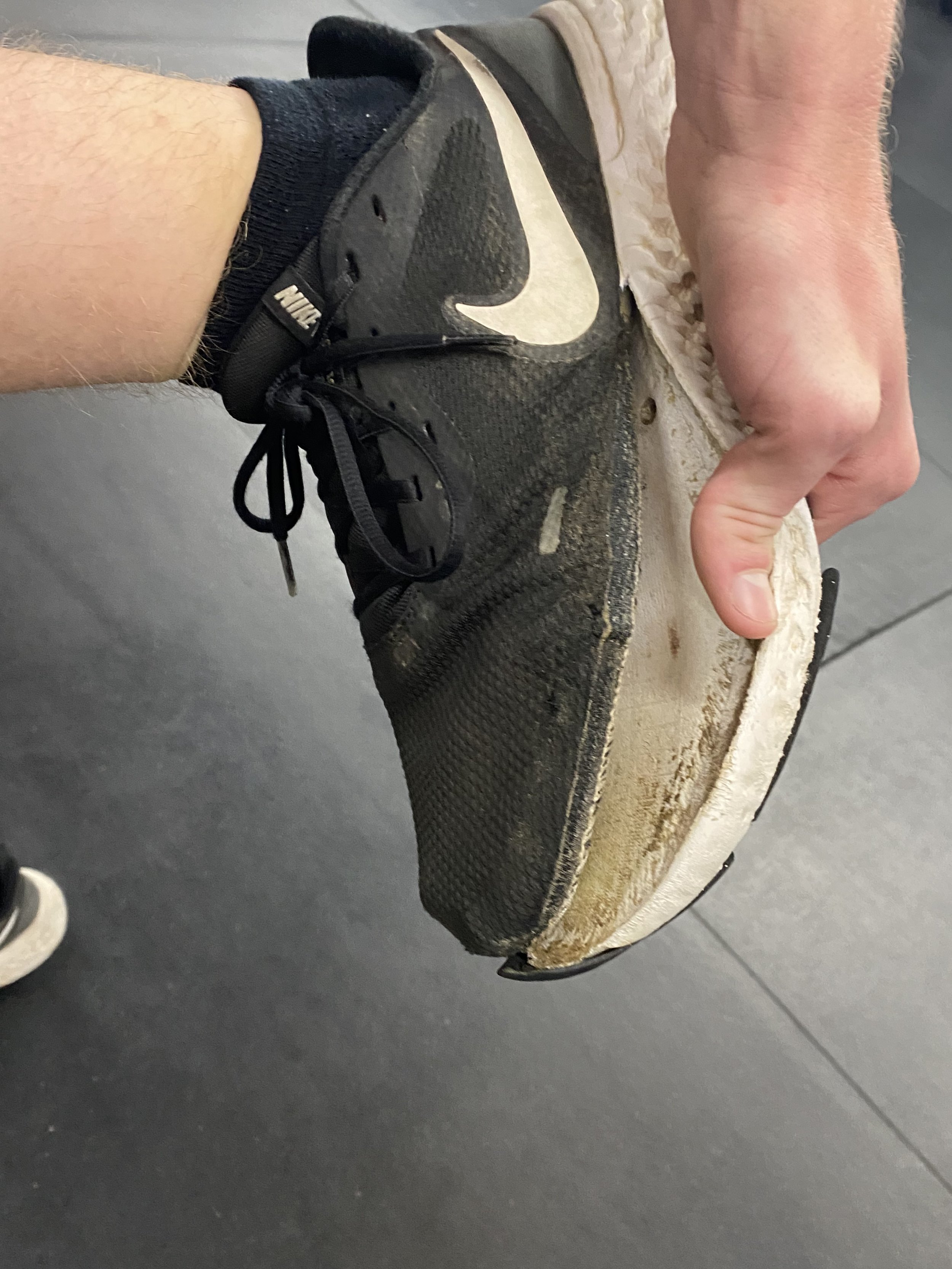Choosing The Best Shoes For Training | The FIT Facility
Proper Footwear For Training
How do you select the best workout shoes? Is it style, comfort, social pressures of acceptance or how about function? Many factors influence the consumers buying decision when it comes to footwear, however we believe the most important factor is often overlooked. Function. The majority of clients that first come into our facility often wear running shoes. Doesn’t matter the brand however our observations and experience tell us that the younger generation usually wears some sort of Adidas with the “boost” soles, while adults tend to wear ON Clouds, Brooks, Hokas, etc.
While we may not exactly be brand loyal (we have no sponsorships and are currently taking applications), we can give you a general checklist and help you cultivate an “eye” for picking proper footwear for lifting and cross training.
There’s nothing wrong with these shoes (running), in fact, they’re great if you actually go for a run, or if you’re wearing them for athleisure activities (you know, over sized t shirt with yoga pants grabbing a pumpkin spiced something with no actual plans of working out).
However, they’re hardly acceptable for resistance training, cross training or sports performance training.
Wearing improper footwear can lead to injuries, subpar performance and frankly, just be a pain in your ass.
Improper Footwear & Injury Potential
Without getting too far into the weeds; picking the proper footwear is all about making a stable connect to the ground. Without this connection (provided by a flat, stickier sole) training with weights and/or sports performance training becomes less effective and/or dangerous.
Enhance Performance
Maintaining a proper connection to the ground is critical if you’re trying to improve performance. In the strength and conditioning world, we call this “creating tension”. You can create tension from the top down (with the weight and your upper body) or you can create tension from the bottom up (your foot rooting into the ground creating tension up the frame). In the world of sports performance and fitness, the name of the game is how much force you can put into the ground, when your shoe is the limiting factor, it’s essentially acting as a governor on your performance. Energy leaks through improper connections to the ground will absolutely limit your potential for improved performance.
Choosing the correct shoe can make a big difference in your performance in the weight room and during speed and agility sessions. Cross training shoes are specifically designed for versatile training activities and are a better choice than running shoes when it comes to weightlifting and agility training. Cross training shoes offer better stability and support during lateral movements and quick changes in direction. They provide a wider base of support and have a firmer sole that allows for more control and balance during exercises like lunges, step ups or even most COD/agility drills. In addition, cross-training shoes are usually more durable and have a longer lifespan than running shoes, making them a better investment in the long run (no pun intended). When it comes to training for performance, investing in good quality cross training shoes is definitely worth it.
Mitigate/Avoid Injuries
Developing an injury because of footwear will always be a stupid way to get injured. Let’s face it, injuries will happen in sports, but if you can help it, you should. Wearing proper footwear is a start. Two of the most common failures in footwear that I believe can lead to knee/low back injuries and/or ankle injuries happen when the shoe allows the foot to slide in it or when the sole of the shoe actually twists beneath the athletes foot. In both instances, the foot will continue to travel laterally, the force has to go somewhere, typically un the chain to the knee and/or hips. When this happens suddenly and violently, it can increase the risk of potential injury of these areas. Here’s a great illustration called the “Joint by Joint Approach”, made popular by Michael Boyle and Gary Cook.
Another common failure in the shoe I see most often is the shoe completely tip over. You can check this by standing up and rolling your ankle off to the side, if the inside of your shoe comes off the ground and feels/looks like it can flip over. It will. You need to choose shoes that provide adequate ankle support laterally when making explosive cuts. Running shoes obviously aren’t suitable for speed and agility training. Nor are they suitable for weight lifting. Running shoes are only suitable for running, and athleisure.
Maintain Structural Integrity of the Foot
When it comes to strength training and lateral speed and agility sessions, choosing the right shoes can make all the difference. While running shoes may be great for pounding the pavement, they are not necessarily the best choice for cross training. Cross training shoes, on the other hand, are designed with a wider base and more lateral support, making them ideal for movements like reactive speed/agility, single leg exercises, and plyometrics. A cross training shoe’s stability helps ensure proper form during exercises, improves balance, and minimizes the risk of injuries. Additionally, the added support and structure provided by cross training shoes can help prevent foot and ankle instability during lateral movements. Overall, choosing a specialized cross training shoe is essential for those involved in strength training and lateral speed and agility sessions, as it helps maximize performance while minimizing the risk of injury.
Recommendations
This isn’t the end all list, however these are the shoes I’ve seen have the most success and the ones I’ve personally wore. I personally recommend the Nike Metcon Free (3/4), New Balance Minimus and Reebok Nano Collections. I’m sure there’s better ones out there and if there’s a shoe company that wants us to put them to the test, we’re always happy to do so!
For more information like this and on our Sports Performance and Total Fitness Program, click the links.


